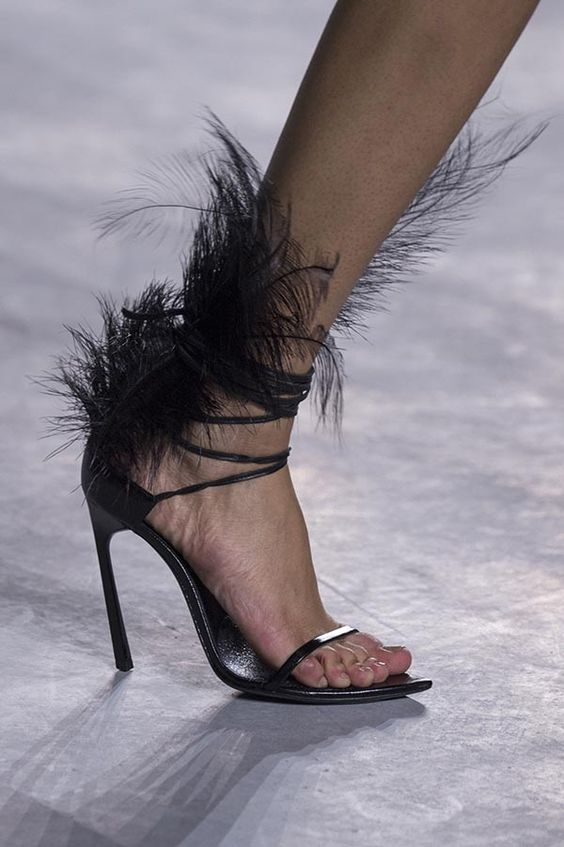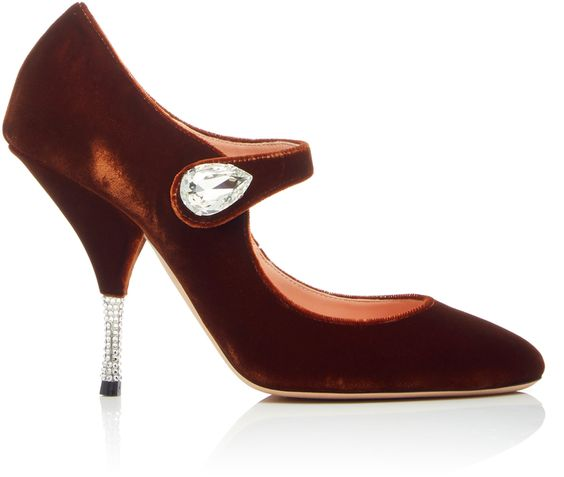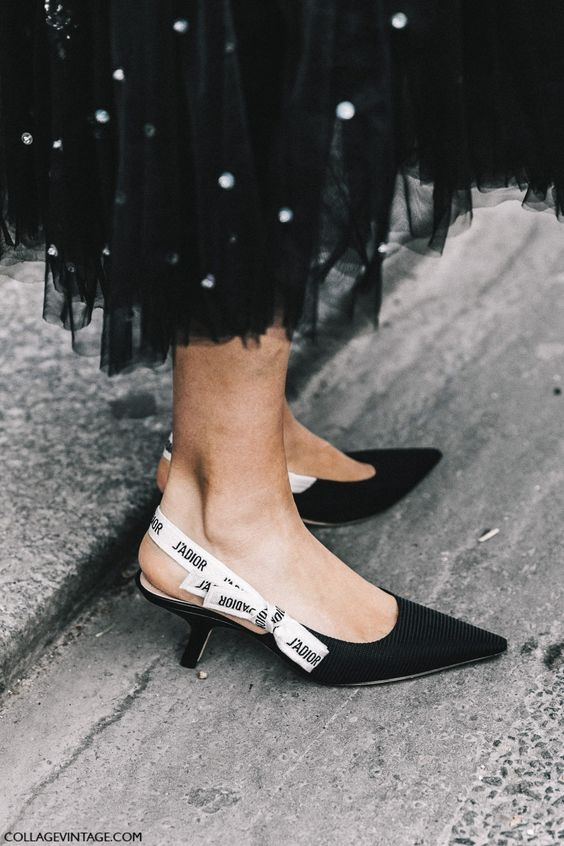
Image credit: Karla Lopez Rivera
Last year we started our segment ‘What’s In A Shoe?’ where we analyse shoe components with the purpose of helping you make wiser, more informed heel choices. The first component under the microscope was the heel counter, so we are following through with the rear part of the shoe and discussing our favourite component – the heel! In this post we intend to breakdown some of the science of a well designed heel and why some high heel shoes are more comfortable than others.

- Thickness of the heel
This is a no brainer. The thicker the heel the more surface area there is with the shoe and the ground. A greater heel surface area correlates with increased stability and overall comfort and reduced body fatigue. This Dolce and Gabbana shoe showcases a decorative heel which is partially open but I presume the metal used around the cage-like detailing is strong enough to withstand human weight and walking and doesn’t buckle. The heel tip area is very wide improving stability.

These Giuseppe Zanotti heels on the other hand have an extremely thin heel with limited surface area. Beautiful as thin heels are, they aren’t really designed to walk in for long periods of time or distance. Keep these for dinner or cocktail parties where you know you have access to a chair.
- Placement of the heel.
This is something that most people don’t consider when purchasing their shoes and it is extremely important, particularly when buying high heels. The heel of the shoe should be placed centrally under the heel bone and in line with the ankle joint. Avoid buying shoes with the heel placed too far back! This is a design fault that a lot of designers fall into as they are trying to achieve a particularly aesthetic. The shoe may look sleek but it will definitely be more uncomfortable. Why? If the heel of the shoe sits at the back of heel bone instead of centrally, the weight of the body will be thrust forward causing premature pain to the ball of the foot. Additionally the upper body will be more inclined to hunch forward and the knees will almost always be held in a bent position exacerbating muscle fatigue particularly in the quadriceps. The ability to put weight through the heel and rest is drastically reduced. It will affect walking style and instead of a natural heel-toe action the wearer will be forced to walk with the foot landing flat. A clumping action….. Very awkward and unflattering!

We love the look of these Saint Laurent 2018 heels. Not sure if the feather detail is a permanent fixture but we love it. These babies would kill your feet though! The heel sits at the very rear of the heel bone which would force all weight forward. The model’s foot is raised in this shot as she is probably struggling to walk in it. The upper straps are doing nothing for stability as is the heel. Best sit down all night in these!!

These Rochas Mary-Jane pumps on the other hand have perfect heel placement. Centrally placed under the heel and in line with the ankle joint.
- Heel height
Again a no brainer. The higher the heel the more weight on the forefoot and generally reduced foot comfort and increased risk of injury. But a small heel of approximately 3-5 cm is actually more comfortable than completely flat as it places the pelvis in a more relaxed position and will decrease muscle fatigue. Heels of 5-8cm heels are generally used during the day and around the office. We still wouldn’t recommend walking huge distances in this heel height. Anything over an 8cm heel is generally for night functions or parties. Ensure you are dropped off at the door of the venue and there is seating if you intend to wear shoes with this heel height. A platform will offset the height of a heel which will improve forefoot comfort. It does however change the complete look of the shoe.

The kitten heel is the perfect solution and is right on-trend at the moment!
So go forth and apply your new found knowledge of the heel and enjoy the comforts that will go along with it!
Until next time,
E & E
Credit for all other images: Pinterest. Contact hello@the-well-heeled.com to have your image credited.


